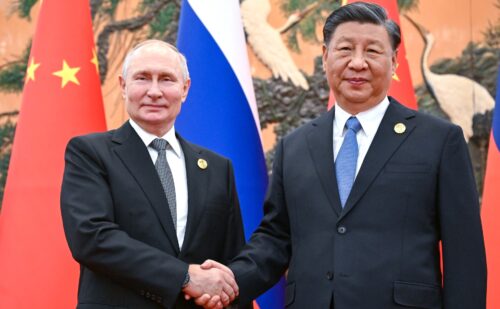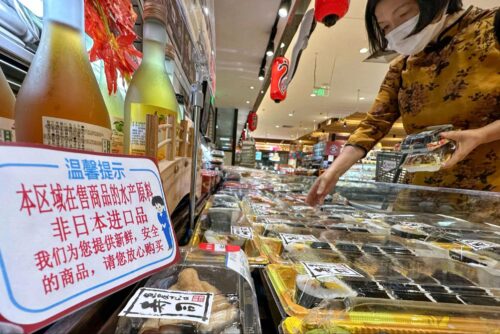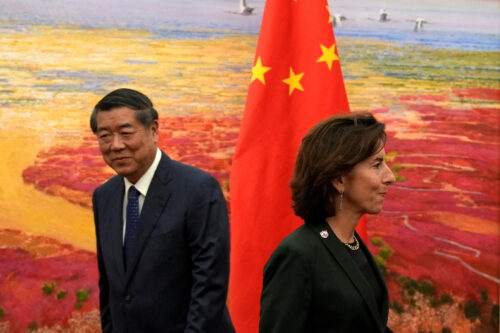China’s insistence on food security is hurting consumers
The Chinese government is right to be concerned about the source of its food, but protectionism is not the answer.

Food security was featured prominently during the Two Sessions that ended on March 11, the country’s most important annual political meeting. Both President Xí Jìnpíng 习近平 and outgoing premier Lǐ Kèqiáng 李克强 highlighted their concerns about keeping China’s food supply secure. One of the slogans that came out of the meetings was “food security is one of the nation’s weighty matters.”
But last week’s discussions were hardly the first on the topic. As early as 2016, the head of the country’s National Bureau of Food, Rèn Zhèngxiǎo 任正晓, declared that China “must firmly hold the rice bowl of the Chinese people in its own hands.” In 2018, food security was determined to be such an important matter that the same bureau’s name was changed to the National Food and Strategic Reserves Administration in order to stress its importance.
Government concerns are partly caused by volatile food prices in the last year. In March 2021, the price of corn rocketed to record highs before crashing in September. In October, eating spinach got even more bitter as the price of the vegetable surged 157% in a month. Other wholesale vegetables increased 28% over the same four-week period, with a pound of lettuce costing as much as a pound of chicken or pork in some Beijing markets. In November, the Ministry of Commerce issued a report encouraging residents to stock up on essentials, and Beijingers responded with panic buying. Since late February, wheat prices have shot up because of the Russian invasion of Ukraine, the two countries being the largest and fifth largest exporters of the grain, respectively.
Last July, Xi said that Beijing should treat food security as it would any other type of security: “If we rely on imports for food, others can lead us around by the nose.” China’s turn toward protectionism should not be surprising: politicians around the world are doing the same as a solution to a variety of problems. President Joe Biden recently promoted protectionism in his State of the Union address, promising to legislate “Buy American.”
The government and the public are right to be concerned about food, but the solution China has hit on is wrong. Protectionism almost always causes economic problems. Economists largely agree that protectionism exacerbated poverty during the Great Depression, and China’s own economic failures during the Great Leap Forward and the Cultural Revolution were connected to its drive to be self-reliant.
Today, China’s push toward protectionism is contributing to a rise in prices consumers pay. According to Scott Rozelle, a Stanford University professor who is one of America’s top experts on Chinese agriculture, China relies on imports for only approximately 10% of its food. That is very high compared to other countries. Like China, Japan and Taiwan have large populations relative to the amount of their arable land, but they each rely on imports for 40% of the grains they eat. Compared with its neighbors, China is rather walled off from global food markets.
If China abandoned its import restrictions, prices for Chinese consumers would drop. But in Beijing, this kind of liberalization is not the way the political winds are blowing, even if it would be relatively easy — as was proven last month when the government lifted all import restrictions on Russian wheat. Russia is the world’s largest exporter of wheat, and it can produce it much more cheaply than China because it has lots of arable land and a less densely packed population.
One of the major problems with Beijing’s insistence on homegrown food is that it works against China’s comparative advantage. “China has generally less efficient farmers and import restrictions, and that leads to structurally higher prices for agricultural commodities within China,” says Darin Friedrichs of Sitonia Consulting, an agricultural consultancy in Shanghai. China has approximately 20% of the world’s population, but only 10% of its arable land and only 5% of its water. It just does not make sense for China to try to grow all its own food. In his book, The Chinese Economy, Barry Naughton concludes that “China’s self-sufficiency policy involves substantial economic costs. Considering its limited land endowment, China imports surprisingly little food directly…Less grain self-sufficiency would allow China to adapt further to the opportunities of globalization, accepting greater dependence on world markets for grain but perhaps importing less agricultural raw materials or exporting more labor-intensive agricultural products.” The situation has changed little in the four years since Naughton penned those words.
Even when Beijing says it wants to be self-sufficient, the basic laws of economics will force policy-makers into trade-offs. In December, Beijing announced that it wanted to produce 95% of its pork by 2025. At the same time, Xi announced that he wants to make the country independent of soy imports. But these two cannot both happen. 84% of China’s soy is imported, and most of that goes to feeding pigs. For China to be self-sufficient in hogs, it has to rely on American and Brazilian soy.
A better solution would be for China to drop import restrictions. After a report was released showing China had failed to live up to its January 2020 commitment to buy more American food, the Biden administration said it was not planning to roll back the Trump tariffs. Opening up its markets would not only help ratchet down tensions in U.S.-China relations, but it would also make food cheaper for Chinese consumers, helping to resolve some of the price swings that China has experienced in the last year.






